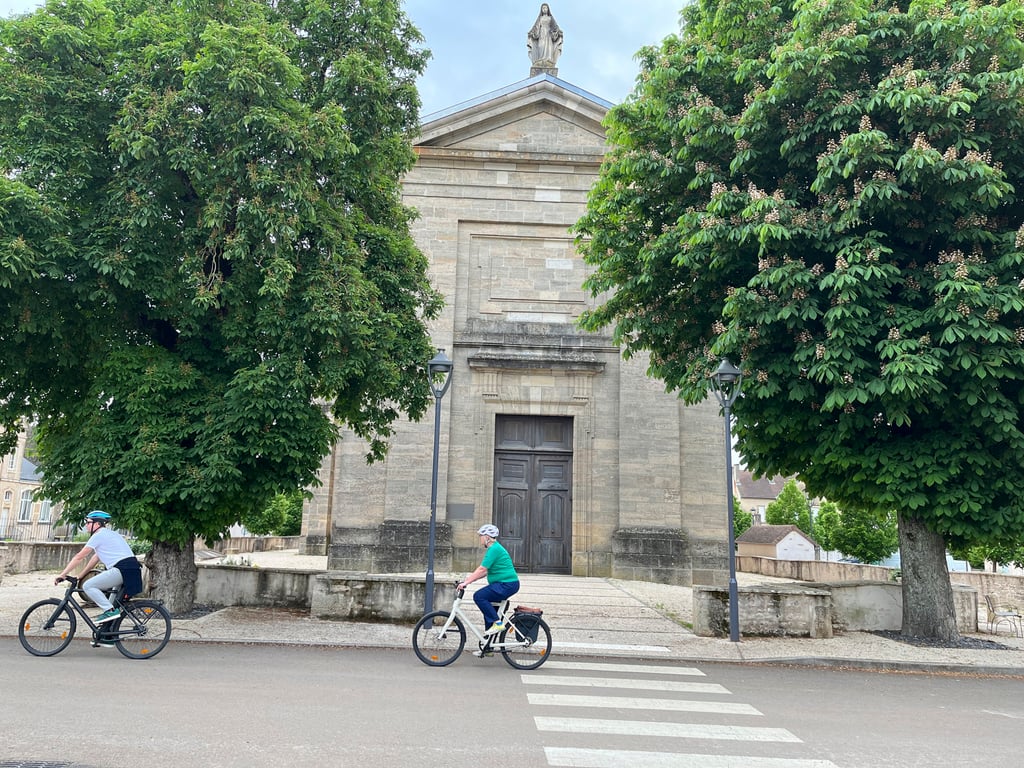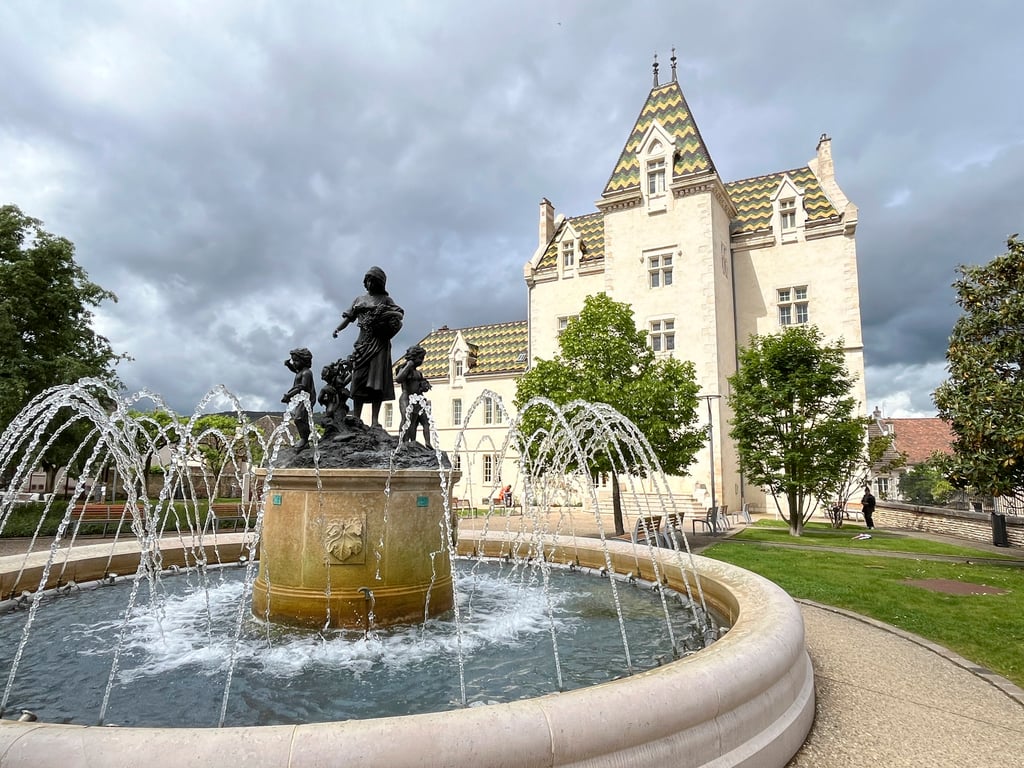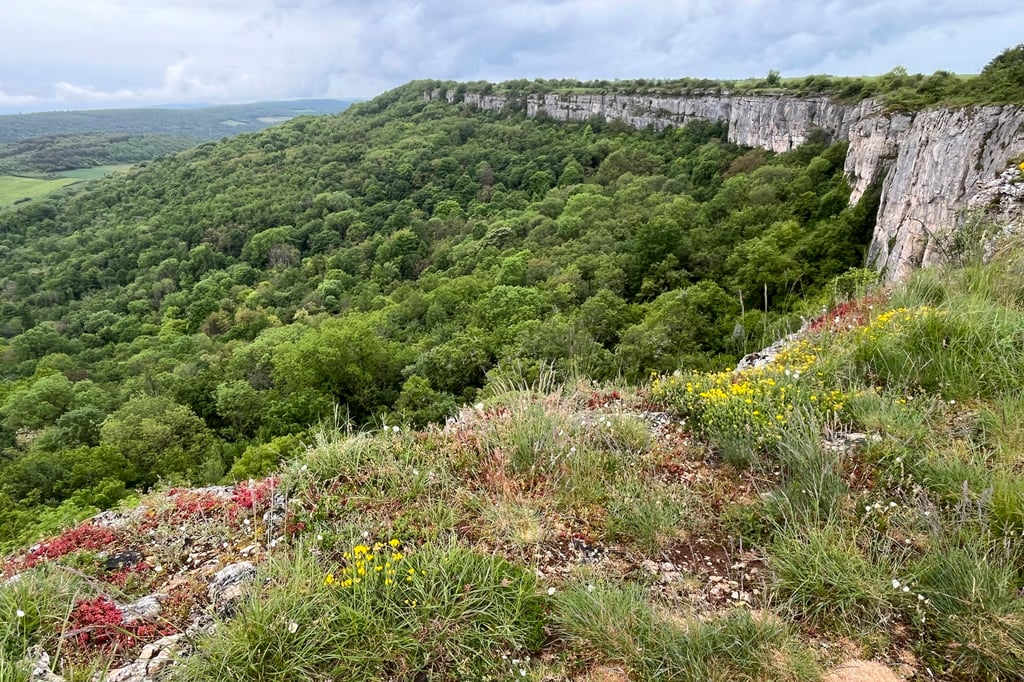Exploring Burgundy by bike, it’s easy to get off the beaten track in French wine region
Here is what I discovered on my recent first trip to Burgundy: what is good for the grape is good for the cyclist. This is especially true if you enjoy climbing some of the many rocky ridges that line this beautiful, vineyard-filled region in east-central France.
It is on one of them, off the beaten path, that I found my spot, a circus of sorts and perhaps the perfect and most picturesque vantage point in the area.
During my 11-day cycling adventure in Burgundy, I pedalled along the popular Voie des Vignes (Route of Vines), through famous wine villages, along rivers and canals, past chateaux, cathedrals and abbeys.
There is an endless and always scenic variety of riding routes in Burgundy waiting to be explored by bicycle.

Dijon, around 90 minutes by train from Paris, is the region’s historical capital city, the mustard capital of France and home of the impressive Palace of the Dukes of Burgundy.
From Dijon, I took a short train ride to Beaune and eventually Tournus, my two “base” towns from which I did day-trip bike rides. Beaune is a walled city surrounded by vineyards; Tournus, on the banks of the River Saone, features an impressive Romanesque cathedral.
Burgundy’s pinot noir (red) and chardonnay (white) wines are considered among the best in the world, and the well-marked Voie des Vignes route from Beaune south to Santenay (about 14 miles, or 23km) is the perfect introductory Burgundy ride.
Immersed in vineyards, I weaved my way along the narrow, well-paved and mostly flat access roads through Pommard, Volnay, Meursault, Puligny-Montrachet and Chassagne-Montrachet – familiar names to oenophiles.
These villages contain tasting houses and cafes, and several have old, stone-built churches, a fountain of some sort and statues dedicated to wine or the people who make the wine.

During my visit, the grapes were just beginning to appear on the vines and workers were scattered about in groups of two or three, carefully clipping, pruning and tending.
The limestone-and-clay soils that vines sink their roots into are part of why Burgundy wines made from their grapes are so complex, tasty and prized. Cliffs help shield the precious vines from the wind.
The cliffs and ridges also presented a challenge I could not resist. I have learned over the years on numerous cycling trips that panoramic views from up high almost always make climbs worthwhile.

And so, from Santenay, instead of heading back the way I had come, as many cyclists do, I decided to explore the ridges. The first eight kilometres (five miles) of the ride to the village of Nolay were a gentle climb on a bike path through vineyards, forests and then fields of wheat.
And then the real climbing began.
I am an experienced and fairly confident climber, but the next three kilometres were a bit of a challenge. And by a bit, I mean a relentless, heart-pounding, leg-quaking ascent that topped out at a little over 500 metres (1,640 feet).
I made it to the summit of the ridge and then down the other side to Orches, an old stone village resting below a long line of cliffs.
Those cliffs had not been visible from the Voie des Vignes.
“I wonder if I can get up to the top?” I asked myself, and started another climb.
Once at the top, I walked carefully (the only way to walk while wearing clip-in bike shoes near the edge of a rocky, slippery cliff) as close to the edge as I dared.
The view was panoramic and spectacular. The cliffs stretched out to the left and right and below were hillside villages and then the vineyard-filled valley. I could see Beaune off in the distance.
I had found, by a fortunate accident, the Cirque du Bout du Monde. Translated, this means Circus at the End of the World. Cirque also means a steep-walled and semicircular basin on a mountain or steep ridge. That is exactly what this was, although the end of the world part is puzzling.

This seemed like the start of the world to me.
The Cirque du Bout du Monde is off the bike-route radar and I had the cliffs and views all to myself.
I took several photos, some videos and then stopped and stood there, taking it all in for several minutes. I was filled with joy as I listened to the birds chirping and marvelled at the view.
Finding unexpected treasures like this is one of my favourite things about cycling trips.
Over the next several days, I rode to the medieval hilltop village of Brancion; through the 1.6km-long Tunnel du Bois Clair, a former railway tunnel and now the longest bicycle tunnel in France; to the famed Chateau de Cormatin and Abbaye de Cluny; on bike paths along the Saone and the Canal de Bourgogne; and on an endless string of small country roads.
Despite all these scenic cycling routes and historic sights, I could not stop thinking about the Cirque du Bout du Monde. And so I returned and made the climb to the top of the cliffs on my final day of riding. The views were just as spectacular as I had remembered.
Steve Wartenberg is a writer based in the US state of Ohio.

